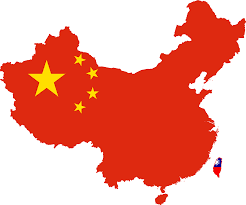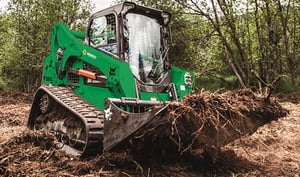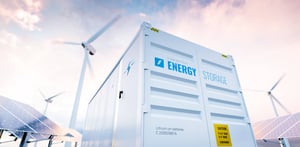Companies around the world are rushing to turn the flying car dream into reality. A test flight in China offers Fidelity International analyst Reggie Pan a glimpse of what the future of transportation could look like.
I have taken many field trips across Asia as an equity analyst. From robot exhibitions in Tokyo to the world’s biggest duty-free shop on China’s Hainan Island. But none of them are as adventurous or as futuristic as this one: a test flight in an electrified two-seat aircraft – for some, the closest we might get to a flying car.
You can watch the video here: https://video.fidelity.tv/view/G4MpZVjq7qXeuKNyLoK1ML
It’s a wet summer afternoon, and I’m at EHang Holdings’ test site on the Pearl River in the southern Chinese city of Guangzhou. The company is the first eVTOL (electric vertical take-off and landing) maker in the world to receive a licence to carry passengers commercially. The battery-powered aircraft can take off and land like a helicopter and cruise like a plane. The model I’m testing is EH216. It has a sleek, oval-shaped cabin and eight pairs of motors fixed at the end of eight arms, like a giant drone. The cabin has two seats, but I will be the only one on board. Yes, this fully autonomous vehicle has no pilot!
I step into the eVTOL and fasten the seatbelt. After the technicians shut the doors, I feel the anxiety rise. Like most people, the only aircrafts I’ve boarded are ordinary commercial planes, which are much larger than this and have at least one pilot. What if something goes wrong up there?
A dream of generations
Seamless, hassle-free air taxis have been the aspiration of futurists since the Wright brothers and Henry Ford. In the past five years, companies around the world, including Joby Aviation and Archer Aviation in the US, have been racing to make them a reality. China’s prowess in battery technology, its mature electric-vehicle (EV) supply chain, and supportive regulators have helped local companies to grow fast. China accounts for about 50 per cent of the world’s eVTOL models[1], according to industry estimates.
The propellers start to turn, quickly gathering speed. I can’t help but exclaim as the aircraft leaps up. It moves through the air so smoothly that I could have held a cup of tea without spilling a drop. My worry fades and I start to enjoy the view. The craft rises about 60 metres into the sky. The rain has cleared and I can see boats snaking slowly along the Pearl River. Far away is the sprawling cityscape of Guangzhou. I can hear the noise of the motors, but it’s quieter than that of a helicopter. My voice carries above the machine without any trouble and there’s no need to wear a headset.
Low-altitude economy
Flying cars are just one part of the so-called “low-altitude economy”[2] that China is vigorously promoting as a new driver of economic growth. Drone deliveries are already flying high in some cities. In Hong Kong, where I live, people who take a stroll along the Ma On Shan Promenade can get pizza or burgers delivered via drones from restaurants across the bay. It’s much faster than a delivery by a human rider. In Shenzhen, a Chinese tech hub just four miles from Hong Kong, items including bubble tea and hot soup are available for drone delivery.
The eVTOL circles in the air for about three minutes and then slowly comes down to land. It greets the ground seamlessly, especially compared with those rough landings I’ve had on commercial planes.
I climb out of the aircraft, exhilarated. I’m sure the innovation I just experienced will change the way we travel. eVTOLs are greener, quieter, and more comfortable than combustion-engine helicopters. They’re a practical option for sight-seeing and for people to move more freely in congested urban areas or between neighbouring cities. And it’s more economical: production and maintenance of these machines is cheaper than traditional aircraft and there’s less infrastructure needed for landing and take-off.
No guarantees
Still, a host of challenges remain in the commercialisation of eVTOLs. First, regulation. While regulators in China are supportive, they still haven’t given a green light to sales of flight tickets for the public, even after approving EHang’s EH216 for mass production. Second, technology. Batteries are probably the biggest bottleneck. eVTOLs’ batteries require a much higher power density (the amount of energy stored per unit of weight) than those of EVs. They need to be lightweight while providing sufficient energy for the flight. How to improve battery efficiency and prevent overheating will be crucial to developing eVTOLs for longer ranges or more cargo or passenger weight. And last, public perception. As with any new mode of transport, convincing people of its reliability will be key.
But it does seem that the dream of the flying car, long considered implausible, is now within reach. Although we won’t see flying traffic above cities any time soon, aircrafts like EHang’s eVTOLs could soon be used for tourism, cargo deliveries, fire-fighting or medical supplies, where there are fewer technical and regulatory barriers. In the medium term, as regulators get more comfortable with the idea, they could provide short-range shuttling services.
And then the day will come when I can hop in an air taxi from my office in Hong Kong Central, rise above the crowded city, and whizz towards the airport, where my next field trip begins.
[1] China’s flying cars ready for liftoff with EV technology – Nikkei Asia
[2] “Low-altitude economy” refers to both manned and unmanned aviation services operating at the airspace below an altitude of 1,000 metres (3,281 feet).
Important information
Reference in this article to specific securities should not be interpreted as a recommendation to buy or sell these securities but is included for the purposes of illustration only. Investors should note that the views expressed may no longer be current and may have already been acted upon. This information is not a personal recommendation for any particular investment. If you are unsure about the suitability of an investment you should speak to an authorised financial adviser.








































